#1 Trusted, Reliable, Local Roofer
CONCRETE ROOFING
Providing Reliable & Trusted Residential & Commercial New Roof, Roof Installation & Roof Repairs.
We have expert roofers with over 25 years of experience.We are licensed and insured
GET YOUR FREE QUOTE TODAY!!
Ultimate Guide to Concrete Roof Tiles: Costs, Pros, and Maintenance
Concrete roof tiles also are a popular roofing component. Benefits of concrete roof tiles offer various advantages to us. Their best features are durability, longevity, and affordability. These features make them attractive. It helps those looking for a cost-effective, durable roofing solution. We will explore concrete roof tile installation, features, advantages, and considerations.
What Are Concrete Roof Tiles?
Concrete roof tiles are roofing components mixture of sand, cement, and water. They mold them under heat and high pressure. This process creates a tile-like shape. It is like regular like concrete but with lightweight and durable features. Hardened roof tiles are typically more robust than traditional concrete.
Cement roof tiles have various profiles and styles. These include flat tiles. It offers a crisp and clean appearance. Suitable for both traditional and modern architecture. They are available in many textures, colors, and patterns. They suit different aesthetic preferences. Hard roof tiles can even mimic the look of other roofing elements, such as slate or clay tiles.
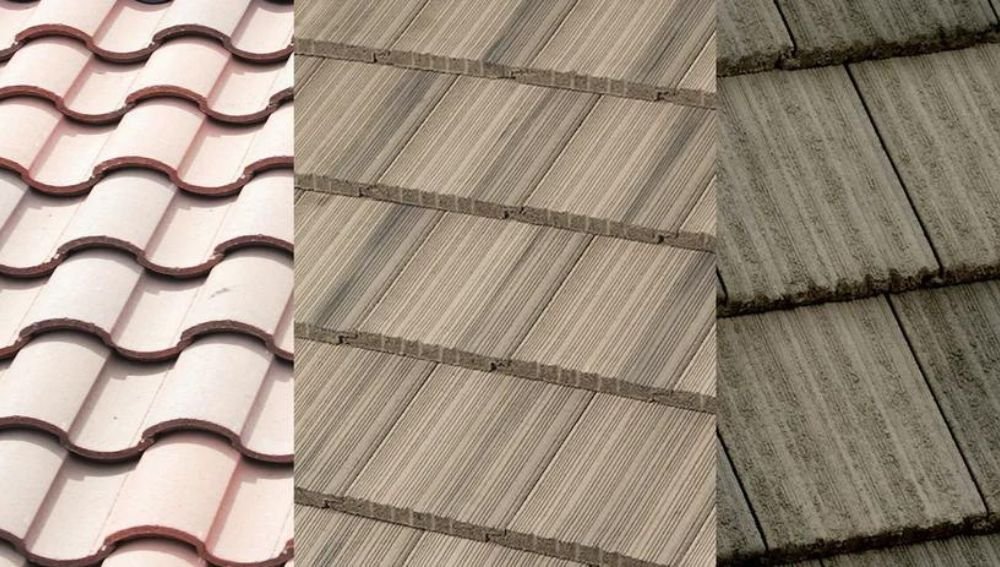
One of the key advantages of solid new roof tiles is their durability and longevity. These tiles resist weather conditions, including high winds, hail, and fire. They have at least a Class 4 hailstorm impact rating resistance and can sustain winds over 125 miles per hour. Cement tiles are also low maintenance. They can last 50 to 100 years with proper installation and care.
Cement roof tiles’ best feature is energy efficiency. They help regulate indoor temperature. These tiles provide homes with cool temperatures in summer and warm in winter. They have the potential to reduce energy consumption and costs. Additionally, these tiles are resistant to pests, rot, and decay. They contribute to their long-term durability and cost-effectiveness.
Professional roofing contractors should install concrete roof tiles. You must have experience working with this material. It is vital to ensure proper roof support structures. These roof tiles can be heavy and need a sturdy framework. We recommend regular inspections and cleaning. It’s crucial to prevent debris buildup that can trap moisture and cause damage over time.
These tiles are durable, long-lasting, and pleasing to the eye. Make these next roofing options from sand, cement, and water. They offer various benefits. These include durability, longevity, energy efficiency, and resistance to weather conditions. When considering concrete rooftop tiles, a professional needs to install them. Ensure proper maintenance for optimal performance and lifespan.
Concrete cover slates are sometimes called ‘flagstones. It is so because they resemble flagstones in appearance and texture. But roof tiles are much heavier. Rooftop tiles have a flat surface. They often texture them with tiny grooves or ridges. Water must run off smoothly without pulling up at the bottom edge. It makes them excellent for use on roofs with standing water after heavy rains.
Features of Concrete Roof Tiles
Craftsmen make hard rooftop tiles from sand, cement, and water. Molded and dried to produce a tile-like shape. They come in various textures, colors, and styles. They range from traditional Mediterranean to modern slimline designs. They are also highly customizable, allowing for unique roofing designs and configurations.
Concrete rooftop tile installation has several features. It makes them a popular choice for roofing applications:
Outlast Its Life: Choose concrete roof tiles for their famous strength and durability.

Concrete top tiles undergo various tests to determine their physical and mechanical properties. It includes splitting tensile strength. Manufacturers may conduct their own testing. They provide this information in their product documentation.
It’s always best to consult the manufacturer or their technical documentation. It would reveal the most accurate and up-to-date information on the tensile strength of concrete rooftop tiles.
They also resist damage from ice storms, strong winds, and severe weather conditions. It makes them better suited for different climates.
Long Life: Concrete top tiles are often 50 to 100 years long. Proper installation and maintenance will lengthen their life. This longevity ensures they provide reliable protection.
Adaptable: These slates come in various profiles, styles, colors, and textures. It lets house owners choose a look that complements their architectural style. Besides, they can choose from their personal preferences. They can even mimic the appearance of other roofing matter, such as clay or slate tiles3.
Energy Capacity: Concrete cover tiles have excellent thermal properties. They can help regulate indoor temperature. You can contribute to energy savings and increased comfort inside the home. It happens when the roof surface reflects sunlight and reduces heat transfer.
Fire Resistance: Concrete square tiles are fire-resistant, often achieving a Class A fire rating. This feature adds an extra layer of safety and protection to the structure.
Low Maintenance: Cement roof tiles are low maintenance. They need periodic inspections for damage and cleaning. You must remove debris or cause pests, rot, and decay to increase.
Sound Insulation: Concrete block tiles have good sound insulation properties. They can help reduce external noise and provide a quieter environment within the house.
It is critical to note that the features of concrete porcelain tiles may vary depending on the specific manufacturer and product. Roofers recommend reviewing the specifications and technical information. Manufacturers provide these specs for more detailed features and benefits.
Cement Roof Tile Considerations Follow The Manufacturer’s Installation Guide
Proper installation is crucial to ensure long-lasting hardened roof tiles’ performance.
Professional roofers should install them for optimal results. They must have experience working with this material. It is imperative to follow the manufacturer’s installation guidelines. They come with a specific firm pantile roofing product. It includes instructions and installation methods. They can vary depending on product type and manufacturer. Consult with a licensed roofing professional for safe and proper installation practices. Weight Characteristics Concrete roof tiles require sturdy roof support and heavy structures. It is necessary to ensure they can withstand the load. Many homeowners should consider this when considering hardened roof tiles for their homes. Affordable Cost
Solid roof tiles are more affordable than other roofing matters like blacktop. Slate and metal roofing projects are more expensive than tar tiles. Yet, their durability and longevity can make them a cost-effective investment in the long run. Low Maintenance Requirements
Firm roof tile problems need minimal maintenance. Regular inspections and clean your concrete roof are necessary to prevent debris, mildew, and moss accumulation. These can trap moisture and cause damage over time. In a nutshell, cement roof tiles are a durable, long-lasting, and energy-efficient roofing solution. They offer many benefits to house owners. These include fire resistance, low maintenance, and various styles and colors. When considering roof tiles, residential owners should look into the following:
- Installation Needs
- Weight Load Requirements
- Affordable Cost
- Maintenance Care
Choosing a reputable roofing professional and manufacturer of high-quality materials is essential. We’ve compiled a list of all you need to know to make a wise purchasing decision. It will help you decide whether this kind of roofing is the best for you.
List of Factors that affect Concrete Roof Tiles Performance
Concrete damaged tiles can wear down due to various factors. Here are some common factors that contribute to the deterioration of concrete roof pantiles:
Weathering
Exposure to harsh weather conditions such as rains, hailstorms, strong winds, and UV radiation. They can cause gradual wear and tear on concrete rooftop tiles. Constant exposure to these elements can lead to fading and cracking. It will also lead to general surface deterioration over time.
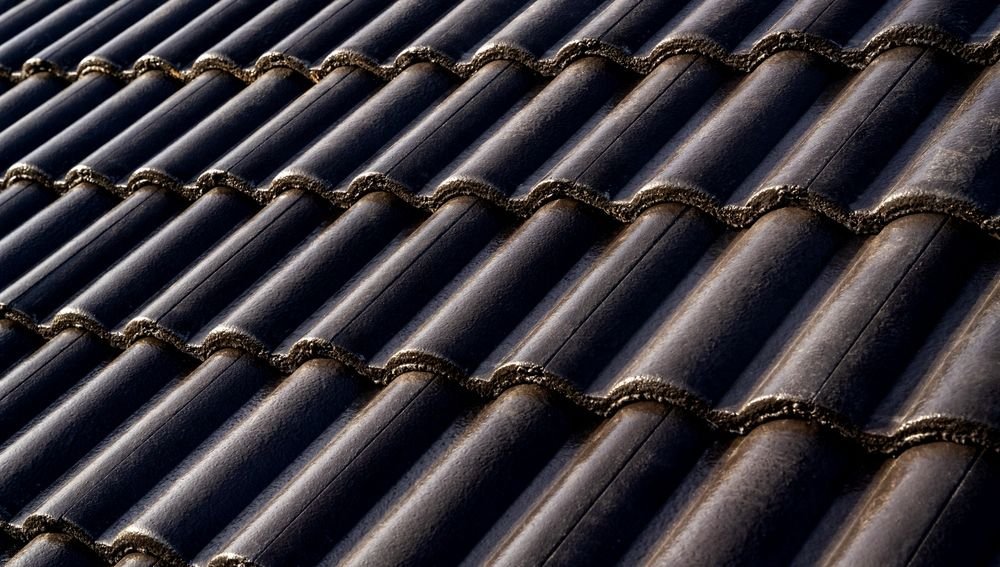
Moisture Damage
If you don’t proper seal the tiles, moisture can penetrate the concrete material. It leads to damage. This moisture intrusion can cause the tiles to become:
- Brittle
- Crack
- Develop mold
- Mildew
It can further compromise their structural integrity.
Mechanical Damage
Hardened roof tiles may be susceptible to mechanical damage. It’s caused during installation or maintenance activities. Mishandling or heavy impact can result in chipping, cracking, or breakage of the tiles.
Poor Ventilation
Inadequate ventilation in the attic or roof space can cause excessive heat buildup. It can also speed up the deterioration of compressed roof tiles over time. The increased thermal stress may lead to the expansion and contraction of the tiles. It results in their cracking or warping.
Regular maintenance, inspections, and repairs can help identify and address potential issues early. It extends the lifespan of calcified roof tiles. Follow the manufacturer’s guidelines for installation and maintenance. It will help prevent premature wear and tear.
It’s paramount to keep up maintenance with periodic cleaning and resealing.
This information is a general overview. The specific factors contributing to the wear of caked roof tiles may vary. The above will depend on the circumstances and individual cases.
Types of Concrete Roof Tiles
Natural Concrete Roof Tiles
Natural dried roofing tiles from cement have fine aggregate, water, clay, or other minerals. These tiles are often used on small buildings. You may also find them in rural areas where it is cheaper to use less expensive materials. They are also more nature friendly because these tiles need less energy than synthetic ones.
Synthetic Roof Tiles
Synthetic concrete roofing tiles from cement have a fine combination of water and chemicals. These materials are like polymer resins that give them color and texture. Roofers must be careful about the deterioration of the concrete tiles. It is due to their low cost and durability compared with natural ones. But, creating artificial concrete requires more fossil fuels during production than natural ones.
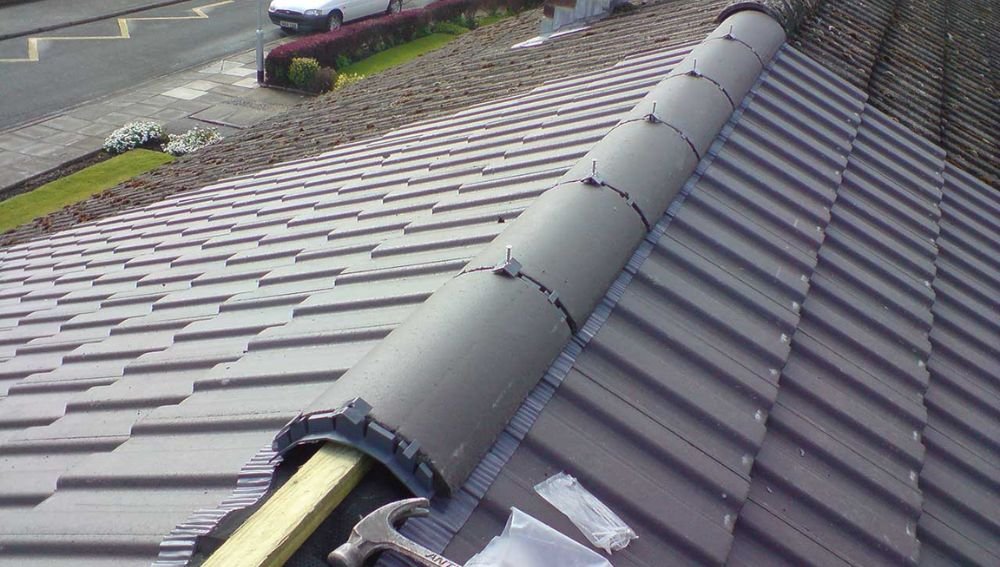
Synthetic or composite roof tiles have several characteristics. It sets them apart from traditional roofing components such as natural slate or concrete plates.
Lightweight
Synthetic roof tiles are lighter than natural slate or hardened tiles. They can weigh as little as one-fourth the weight of natural slate. The lightweight nature of synthetic roof tiles makes them easier to handle. It happens during installation and puts less stress on the roof structure. A standard roof structure can often support synthetic roof tiles. It doesn’t need special reinforcement.
Endurance
Design synthetic roof tiles to be durable and long-lasting. They often have a high impact resistance. It makes them more resistant to cracking or breaking from hail or other impacts. The specific sturdiness may vary depending on the manufacturer and material composition of the tiles.
Versatility in Design and Color
Synthetic roof tiles offer a range of design options. They complement various architectural styles. Often manufactured to resemble many roofing elements, such as slate, wood shakes, or terra cotta tiles. Synthetic tiles usually come in a wide array of colors. It allows residential owners to choose a roof color that suits their preferences. It also enhances the aesthetic appeal of their property.
Weather Resistance
Design synthetic roof tiles to withstand harsh weather conditions. They are often engineered to resist UV radiation, ensuring they do not fade or discolor over time. Synthetic tiles can prevent cracking, warping, or mold growth. It does it by being resistant to moisture absorption. Other roofing components exposed to moisture help protect the rooftop.
Ease of Installation
Due to their lightweight nature, synthetic roof tiles are generally more accessible. They are faster to install than heavier materials like natural slate or concrete tile roof. The lightweight design allows for more accessible transportation and handling during installation.
Specific characteristics and performance of synthetic roof tiles may vary among manufacturers. They recommend materials to consult with the manufacturer. It is vital to include product documentation. Look for comprehensive information on the characteristics of a particular synthetic roof.
What Are Concrete Roof Tiles Made Of?
Gunk roof tiles derived from sand, cement, and water mold them under heat and high pressure. This process creates a tile like regular concrete. But with the added benefit of being lightweight and durable. Caked roof tiles are more robust than traditional concrete.
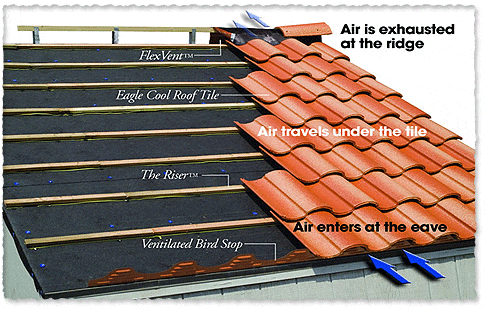
How Are Concrete Roof Tiles Made?
- The first step in making compressed roof tiles is mixing ingredients like Sand, water, cement, and iron oxide. Combine these materials to create a mixture you can press into molds.
- Pour the resulting mixture into molds. It would be best if you prepared them beforehand. Make these molds of wood or steel. Shape them depending on the manufacturer.
- Place the tiles in molds to dry for at least five hours.
- After the concrete pantiles have been set, remove them from the molds and treat them with a water-based masonry sealant.
- Subject the tiles to break strength tests to ensure their quality.
- Stack the tiles into pallets.
Are Hardened Roof Tiles Heavy?
Weight is a serious concern when considering the installation of calcified roof tiles. Concrete slates are heavier than other roofing matters, but they have a lot of benefits that make them well worth the extra weight.
Petrified roof tiles can weigh from 800 pounds per 100 square feet (for 6″ x 6″ tiles) up to 1,1200 pounds per 100 square feet (for 10″ x 10″ tiles).
What Is Under a Cemented Roof Tile?
Roofing felt is an underlay that sits underneath the mortar roof tiles. Install one or two layers of underlayment before putting hardened tile roofing.
Manufacturers make most roof underlayments from materials like asphalt impregnated with fiberglass. Design the roof felt with polyester to prevent water from leaking through cracks in your roof’s surface. Some types can even help heat transfer from your home’s interior to its exterior. It helps to keep surfaces cool and prevent condensation on the roof felt.
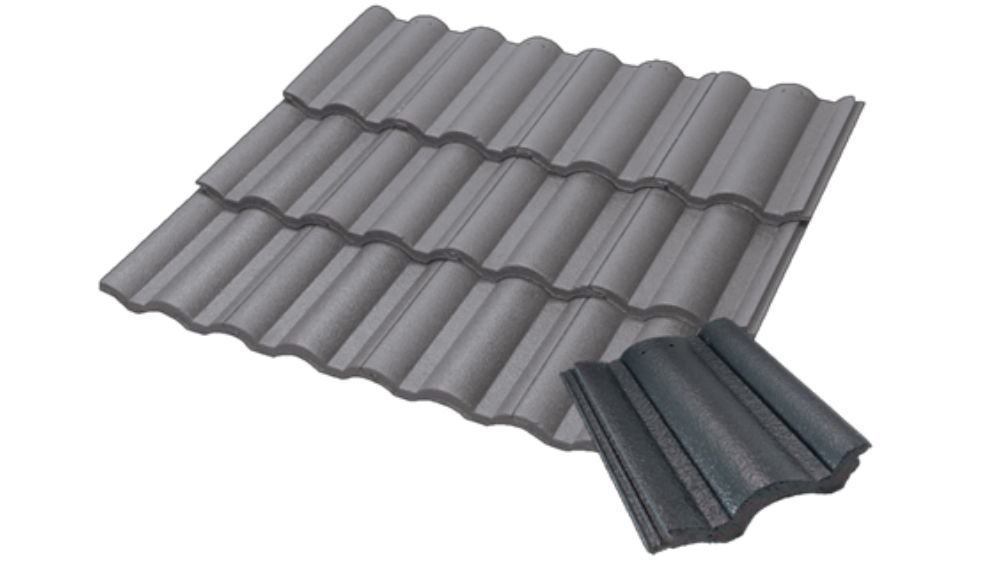
How Long Compressed Roof Tiles Last
Solidified roof tiles can last up to 60 years. Yet, concretion tiles can last much longer than sixty years if roofers install them properly. They must also maintain and repair them.
How to Tell if You Need to Replace Hardened Roof Tiles?
If you’ve had your compressed roof tiles for over 30 years, it’s probably time to replace them with new ones. There are some easy ways to determine if your concrete porcelain needs replacing:
- Cracks or chips in the surface of the tile
- A poor drainage pattern on your roof (flooding after heavy rains)
Ensure you hire a professional contractor to install these types of roofs. When there is no visible damage on your cement tiles, but they may need to be replaced, inspect them first. You have other options even if they are old or aren’t performing well anymore. Do these steps before proceeding with any work on the project.
How Do You Maintain Mortar Roof Tiles?
When it comes to maintaining your concrete bricks, it’s all about keeping them from cracking under pressure.
- Keep the tiles clean. Manufacturers make concrete porcelain roofs of cement. They can absorb water over time if they’re not kept clean. If your tiles are dirty or covered in mold or algae, you might consider removing them. Replace them with a different type of tile.
- Use a roof rake. A rake can remove any loosened dust and debris from your roof surface. You should use this tool to remove any extra moisture when it rains. It is necessary before it can set into gaps or cracks between tiles. This moisture can result in mold growth if left untreated.
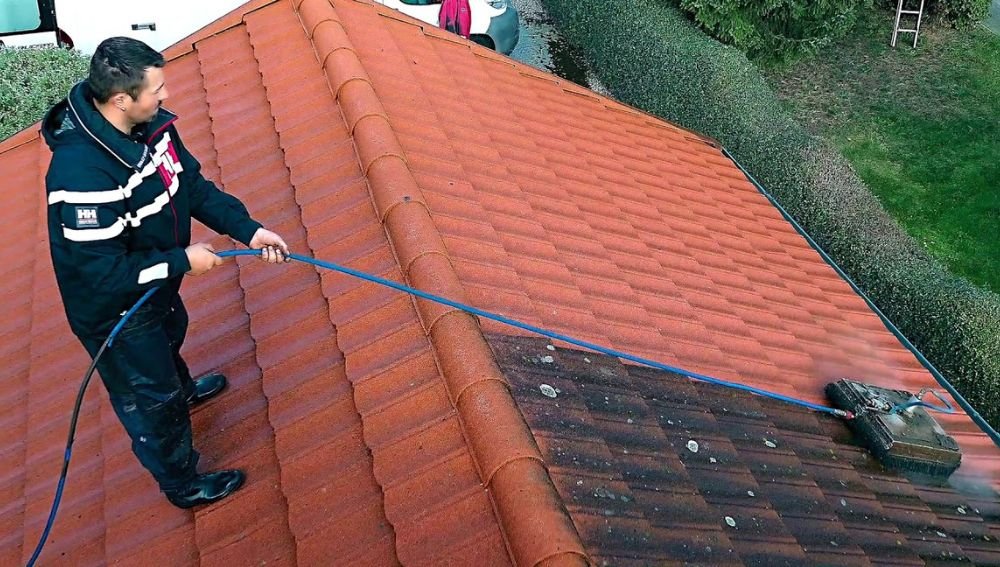
- Don’t store anything heavy on top of your roof tiles. Storing objects with moisture can cause cracks in the surface. They will leak when it rains or snows heavily. You should also avoid storing items containing oil or grease on top of the tiles. These substances can damage the tiles over time. They attract insects such as termites and ants.
- Avoid using strong chemicals. Bleach or abrasive cleaners may damage the surface of your tile. It happens if you don’t rinse them away afterward.
There are some things you can do to extend the life of your roof tiles even further:
- Make sure to keep your gutters clean. Clean roofing things mean no standing water gets trapped inside them over time. It could cause damage underneath your house if left untreated long enough.
Ensure to close all vents tightly. Closed vents will help prevent wind damage during storms. They can cause cracks in your roof tiles.
How to Clean Mud Roof Tiles
The key to having a long-lasting roof is ensuring you’re cleaning them. Here are three easy steps to clean your compressed roof tiles:
- Spray lukewarm water onto the surface of each tile with a spray bottle or hose. Be sure to use only a little water.
- Clean the surface of each tile with water. Then, make sure there are no puddles left behind. Humidity accumulates on top of them. If you still leave some behind after spraying with water, spray again. Repeat this process until they’re entirely gone.
- Once the tiles are dry, clean up any leftover debris underneath each tile using a broom or other brush.
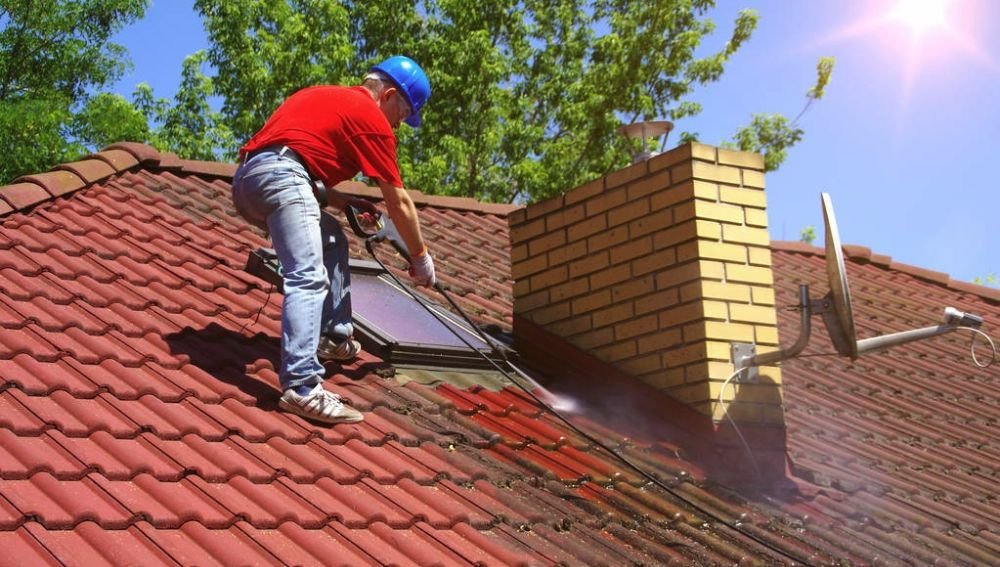
Can You Pressure Wash Concrete Roof Tiles?
Roofing experts warn not to pressure-wash roof tiles. Although pressure-washing concrete roof tiles are possible, . Never use high-pressure water jets as this can cause damage to the concrete. Instead, soft-wash your roof and use good cleaning solutions.
Are Concrete Roof Tiles Expensive?
Concrete tiles are more affordable than other roofing materials but are still costly. In the United States, concrete tiles can cost $400 to $2000 per 100 square feet. That’s about $4.00 to $20.00 per square foot for a standard-size roof of about 1000 square feet.
Read our comprehensive guide to concrete roofing costs and the cost of tile roofing for a breakdown of what kind of pricing to expect.
Installation Costs
The average installation price for a concrete tile roof is $10,000 to $50,000. It depends on the size and whether you need to replace your roof from scratch or repair it.
On average, the cost of installing concrete roof tiles on a house with a 1000-square-foot roof is $20,000. This cost does not include the required materials for installation. It will vary based on location and local weather conditions.
Concrete Roof Tiles Repair
Replacing old underlayments, correcting sagging roofs, patching leaks, and replacing broken tiles can cost $5 to $10 per tile.
Concrete Roof Tile Maintenance Costs
Most homeowners spend less than $100 or up to $1000 per year to maintain their concrete roofs. Your roof needs little to no maintenance on the roof itself, as it is a low-maintenance surface.
Concrete Roof Tiles Guarantee
Manufacturers usually set a concrete roof tile’s lifespan at roughly 30 years. Thus, properly installed and maintained concrete tiles can last for more than 60 years.
Concrete Roof Tile Alternatives
Asphalt Roof
Asphalt roof tiles are commonly used for roofs of houses, garages, warehouses, and buildings. Roofers use them for industrial or commercial purposes. Asphalt shingle, or asphalt roofing, is a building material. These times come from mineral granules, asphalt, and polymers.
Concrete Roof Tiles vs. Asphalt Roof

Concrete Roof Tiles vs. Asphalt Roof
Concrete is more durable than asphalt, but it is also more expensive. Use concrete roof tiles in hot and cold climates. They offer better longevity than asphalt roof tiles.
Metal Roof Tiles
Steel and aluminum are the most common metallic roof tile materials. Metal roofs are lightweight and easy to install. Metal tiles come in various designs and patterns. They resemble barrel tiles, slate tiles, and shingle patterns.
Mortar Roof Tiles vs. Metal Roof Tiles
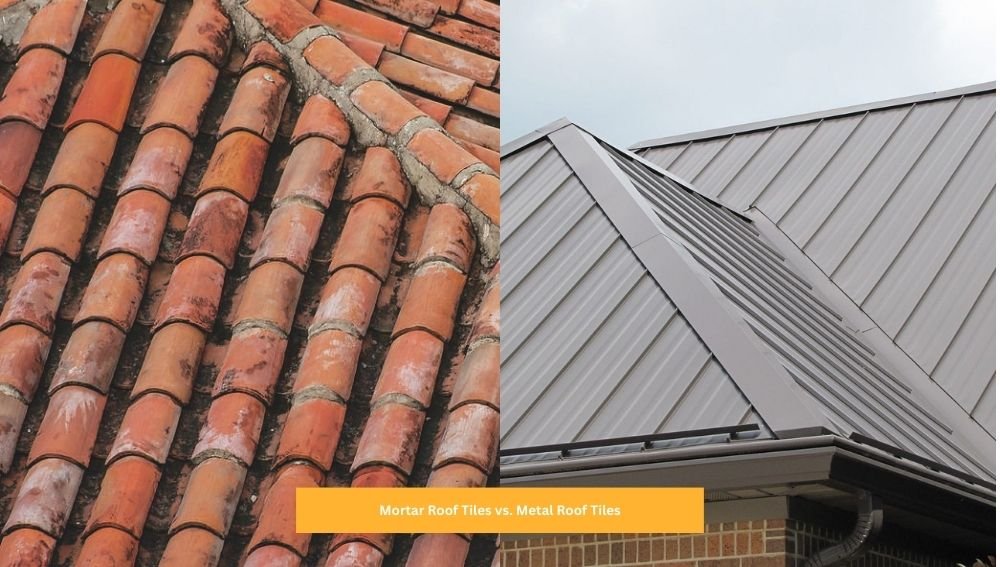
Metal Roofing is a lot more durable than mortar roof tiles. Metal tiles don’t soften in the sun, so that the finish won’t get damaged or peeled off during high temperatures.
Metal roofs also last longer than concrete ones. Although, metal roof tiles are noisier and more difficult to repair than concrete ones.
We hope you’ve found our blog on petrified roof tiles informative. Now that you know what concrete rooftiles are and understand how to maintain them, it’s time to decide which kind of roofing is the best fit for your home. Keep this guide bookmarked so you can refer to it whenever you need more information.
Concrete roof, concrete roof tiles, Concrete Roofing Products, Materials, Inspections, Repairs
Concrete roofing & concrete roof tiles:
This article describes concrete roofing materials:
- Concrete roof tiles
- Poured concrete roofs
- Choices
- Installations
- Inspection
- Defects
- Roofing repairs
- Factual roof tile product sources
This article describes several approaches to constructing concrete roofs. It includes flat concrete roofs, low-slope concrete roofs, and a steep pitch concrete roof.
Concrete Roofing Materials, Choices, Costs, Life Expectancy, Characteristics
Concrete roofing materials, such as concrete tiles or shingles, are famous for their durability and long lifespan. Here are some crucial aspects to consider about concrete roofing materials:
Choices and Types
Concrete roofing materials come in various shapes, sizes, and styles. They suit different architectural designs and preferences. Standard options include concrete tiles. They can resemble clay tiles or slate and concrete shingles. And mimic the appearance of traditional asphalt shingles.
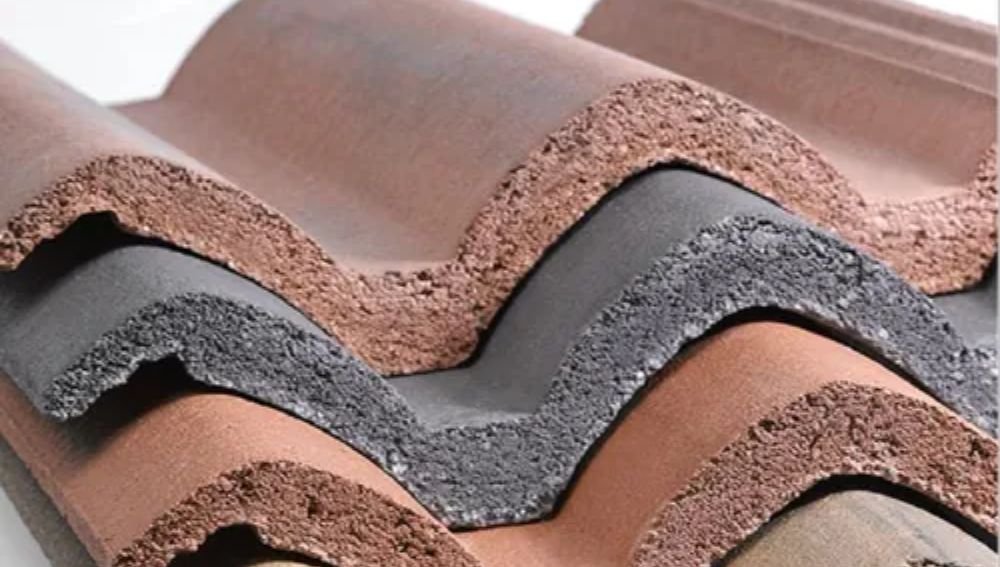
Lasting Endurance
Concrete roofing materials are best for their exceptional durability. They can withstand harsh weather conditions, including high winds, hail, and fire. Concrete materials are resistant to rot, mildew, and pests. They are not prone to warping or shrinking over time.
Life Expectancy
Concrete roofing materials have a long lifespan. When properly installed and maintained, concrete tiles can last for 50 years or more. Concrete shingles often have a lifespan of 20 to 40 years. The longevity of concrete roofing materials can contribute to their cost-effectiveness.
Characteristics:
Weight: Concrete roofing materials are heavy compared to other roofing options. The importance of concrete tiles can vary but usually falls between 8 and 14 pounds per square foot. Concrete shingles are generally lighter. The weight of concrete roofing materials may need extra structural support. It ensures that the roof structure can handle the load.
Natural Insulation: Concrete roofing materials have natural insulating qualities. They can help regulate temperature. It keeps the interior of a building cooler in hot climates and retains heat in colder regions.
Noise Reduction: Concrete roofing materials provide good sound insulation. It reduces exterior noise from rainfall, hail, or other sources. This quality can contribute to a quieter indoor environment.
Expense: The cost of concrete roofing materials can vary depending on factors. These factors include:
- The type of concrete material
- Style
- Manufacturer
- Local market conditions
Concrete roofs are more expensive than asphalt shingle roofs. But are often more cost-effective over their longer lifespan. Getting quotes from different suppliers or contractors is advisable. You will get a specific cost estimate for your project.
It’s critical to hire experienced contractors familiar with the installation requirements. They must use proper techniques when considering concrete roofing materials. Installation expertise ensures the roof performs well and provides the expected benefits.
Specific characteristics, costs, and lifespan of concrete roofing materials may vary. Manufacturers produce their own product characteristics. Professionals recommend consulting with manufacturers, suppliers, or contractors. Get detailed and accurate information about the concrete roofing material you are considering.
Guide to Concrete, Clay, or Metal Roof Tile Shapes, Colors & Types
You must consider several factors when selecting a roofing material. Such factors include durability, cost, aesthetics, and performance. Concrete, clay, and metal roof tiles are popular options. Each option has its own unique characteristics and styles. Here is a guide to the shapes, colors, and types of these roofing materials:
Concrete Roof Tiles: Concrete roof tiles are composite tiles of cement, sand, and water. Reinforce them with fibers for strength and durability.
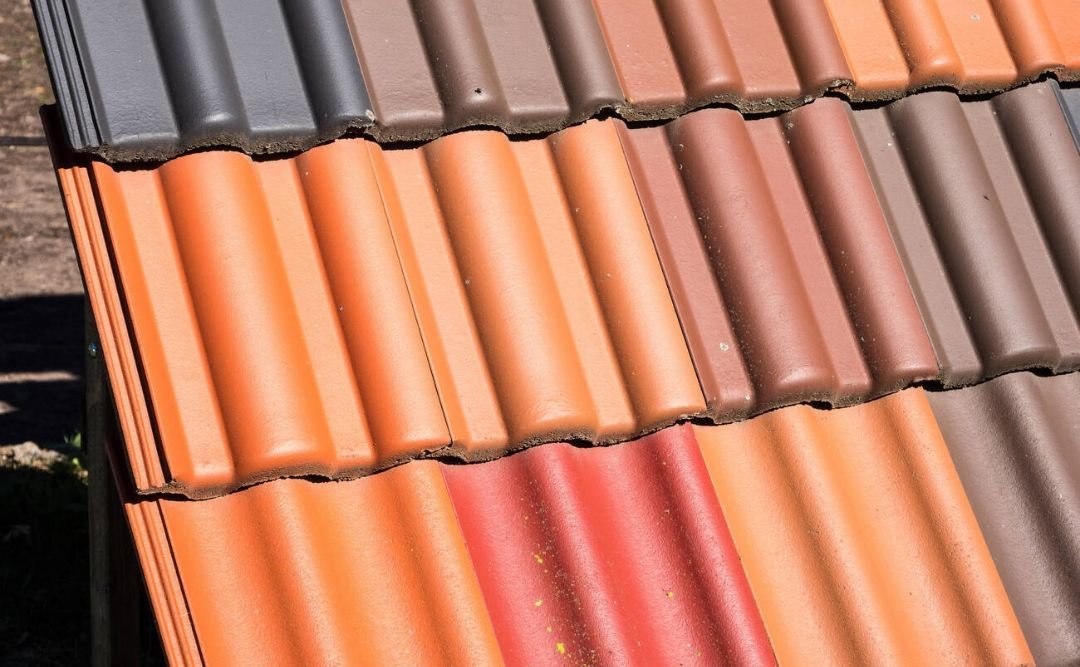
Profile Shapes: Concrete tiles come in several styles. They include flat, low profile, medium profile, and high profile. Favored figures include Barrel S-shaped or curved tiles and flat tiles. They mimic the look of slate or other natural materials. Barrel tiles are standard for their classic Mediterranean or Spanish look. S-shaped tiles are a common choice for colonial or traditional-style homes.
Color Tones: Concrete tiles come in various colors, from earthy tones such as brown, red, and beige to shades of gray, green, and blue. They can also be custom-tinted to match specific design elements. Clay tiles range from reddish-brown to orange, beige, and gray. You can glaze them to protect against weather elements, moisture, and fading.
Standard Types: There are several types of concrete tiles. They include standard-weight tiles, medium-weight tiles, and lightweight tiles. Lightweight tiles are easier to install and put less stress on the roof structure. Standard-weight tiles are more durable and long-lasting. Unglazed and glazed clay times are the most common types. Glazed tiles have a protective layer. It enhances durability and makes them less porous. Coat unglazed tiles with a clear sealant to provide extra protection
Clay Roof Tiles:
Clay roof tiles are a natural, fired product made of molded clay.
Contractors have been using them for centuries. They offer a range of benefits. Clay roof tiles are durable, resistant to extreme weather conditions, and have a long lifespan. They provide excellent insulation, keeping homes cool in summer and warm in winter. Clay tiles are also known for their beautiful aesthetic appeal> They come in various styles, colors, and finishes. They are low-maintenance and environmentally friendly. Clay is a natural and sustainable material. In general, clay roof tiles are reliable and offer homeowners a solid, appealing choice.
Metal Roof Tiles:
Metal roof tiles are a type of roofing material made of durable, lightweight metal. These tiles come from steel, aluminum, or other metals. Their best qualities are versatility and low maintenance.
Metal roof tiles come in several patterns. They include flat, low profile, and textured tiles that resemble clay or wood shakes. They can also go in their standing seam or interlocking panel styles.
Manufacturers paint or coat metal tiles in various colors. They range from traditional shades of white, gray, and brown to bold colors like red, orange, and blue. Some metal tiles come in a natural, unpainted finish.
The most common metal tiles are steel, aluminum, and copper. Steel is the most popular choice for its durability and cost-effectiveness. Aluminum tiles are lightweight and ideal for areas close to the coast. Copper tiles are best for longevity and developing a natural patina over time.
When selecting a type of roof tile, it’s vital to consider the climate, architectural style, and personal style preference. It’s advisable to consult a roofing professional to determine which type and style of roof tile would be best for your home and location.
Concrete Roofing Tile Shapes & Color Choices
Concrete roofing tiles come in a variety of shapes and colors. It allows homeowners to select a style that enhances the aesthetic appeal of their homes. Here are some common shapes and color choices for concrete roofing tiles:
Shapes of Concrete Roofing Tiles:
Flat Roof Tiles: Flat concrete tiles are rectangular or square in shape and lay flat on the roof surface. They provide a clean, modern look. They often use them to mimic the appearance of traditional slate roofs.
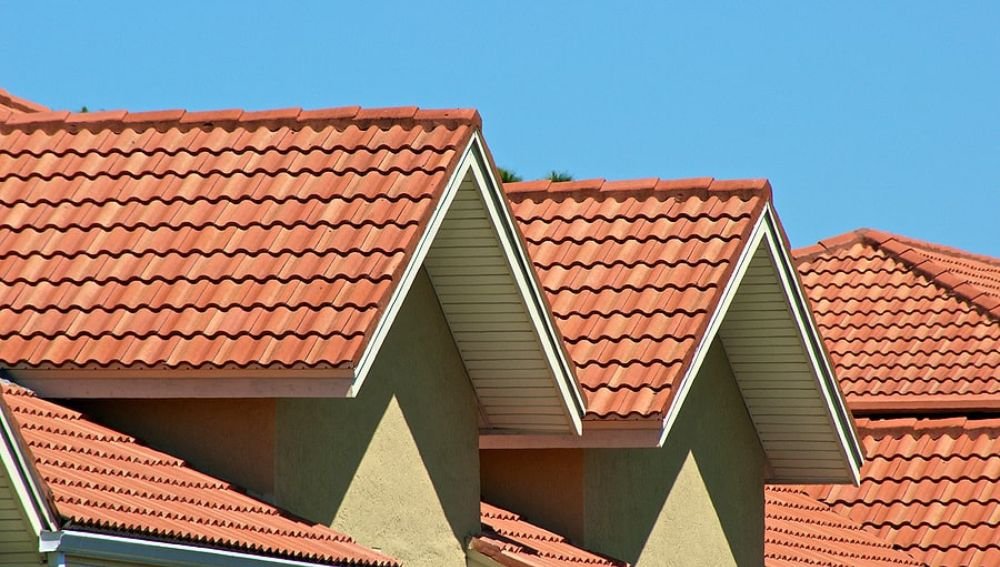
Low Profile Tiles: Low profile concrete tiles have a slight curve. They add a subtle texture to the roof. They offer a more traditional or classic look. They often use them in Mediterranean or Spanish-style architecture.
Medium Profile Tiles: Medium profile concrete tiles have a more pronounced curve. Compared to low-profile tiles, they provide a firmer texture. They enhance the roof’s visual appeal. They are often used in various architectural styles to create depth and interest.
High Profile Tiles: High-profile concrete tiles have a more dramatic curve. They create a bold and distinctive look. These tiles are often used in architectural styles. They need a solid visual element, such as French or Victorian designs.
Colors of Concrete Roofing Tiles:
Earth Tones: Concrete tiles are available in earthy colors such as brown, tan, beige, and terracotta. These colors offer a warm and natural appearance. They complement a wide range of architectural styles.
Red Shades: Red is a popular color choice for concrete roofing tiles. They provide a vibrant and classic look. You can find various shades of red, from deep burgundy to bright terracotta. Its goal is to suit different design preferences.
Blacks and Greys: Concrete roofing tiles in shades of black and grey offer a sleek and modern appearance. These colors can create a striking contrast. They complement other elements of the home’s exterior.
Blues and Greens: Some concrete roofing tile manufacturers offer a range of blues and greens. They provide a unique and eye-catching option for homeowners who want to add a touch of color to their roofs. These colors are often chosen for coastal or contemporary designs.
It’s important to note that the availability of shapes and colors may vary depending on the manufacturer and region. Before making a final choice, consult with roofing professionals or manufacturers. Explore the specific profiles and color options available for concrete roofing tiles.
How to Secure Concrete Roof Tiles to the Roof Deck
Secure concrete roof tiles to the roof deck using various methods. These depend on the specific installation requirements and regional building codes. The most common methods include:
Mechanical Fasteners: Concrete roof tiles are often fastened to the roof deck. Use mechanical fasteners such as screws or nails. Drive these fasteners through the pre-drilled holes in the tiles. Ensure they reach the roof deck to secure them in place. The type and size of the fasteners may vary. Base these factors on the roof pitch, wind exposure, and local building codes.
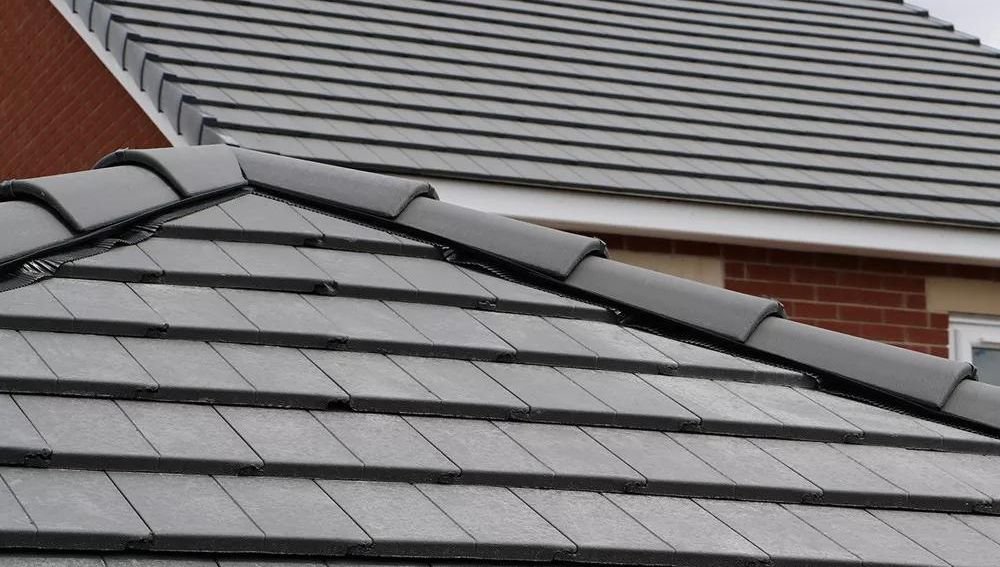
Adhesive Fastening: In some cases, you may use adhesive fastening systems may to secure concrete roof tiles to the roof deck. These systems meet specific industry standards. These include ICC-ES AC152. They outline the acceptance criteria for adhesive fastening of concrete or clay roof tiles. Use adhesive fastening according to the manufacturer’s guidelines and industry best practices.
Battens: In certain installations, use horizontal battens as a part of the fastening system for concrete roof tiles. Secure the tiles to the battens, which are themselves attached to the roof deck. The use of battens allows for an extra layer of support and can also provide improved ventilation beneath the tiles.
It’s important to consult with a roofing professional. You may also refer to the specific manufacturer’s installation guidelines. Roofers recommend a fastening method for concrete roof tiles. Complying with local building codes and following best practices is crucial. The goal is to ensure a secure and durable installation.
Concrete Roof Tile Sources
Concrete roof tiles have gained popularity in the roofing industry. It’s due to their durability, versatility, and aesthetic appeal. It is crucial to source your tiles from reliable suppliers when you’re considering installing a concrete roof. Ensure you receive high-quality products and excellent customer service. Here is a guide to finding trustworthy sources for concrete roof tiles:
1. Local Roofing Suppliers: Start your search by checking with local roofing suppliers. These suppliers often carry a range of roofing materials, including concrete roof tiles. Visit their showrooms or websites to explore their selection. Inquire about available colors and styles. Gather information about their tile manufacturing partners. Workmen prefer local suppliers. They are knowledgeable about regional building codes. You can provide valuable recommendations based on their experience in the area.
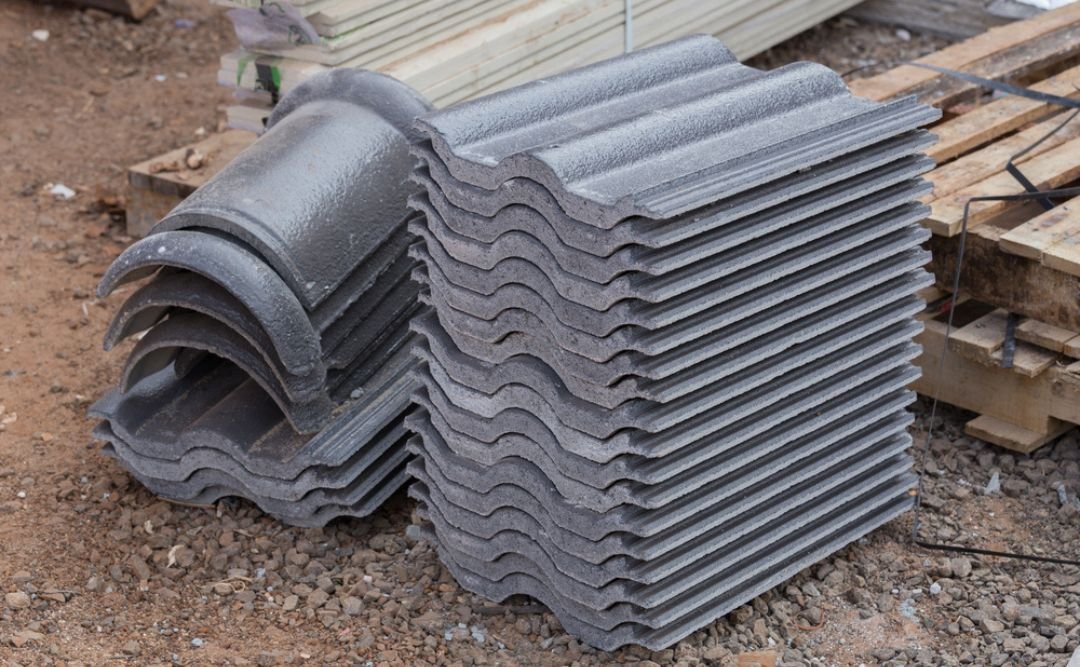
2. Roofing Tile Manufacturers: Some concrete roofing tile manufacturers sell B2C – to consumers. Research reputable manufacturers in the industry. Visit their websites to explore their product offerings. Look for manufacturers with a solid reputation, extensive experience, and certifications. Show their commitment to quality and industry standards. Reach out to them for more information. Request samples to assess the quality and suitability of their products for your project.
3. Contractor Recommendations: Ask for their concrete roof tile suppliers’ recommendations. Do this when you are working with a roofing contractor. Experienced contractors usually have established relationships with trusted suppliers. They can provide insights into the performance, durability, and installation requirements. Use the various brands and help yourself make an informed decision.
4. Online Marketplaces: Online marketplaces are becoming a popular source for construction materials. They include concrete roof tiles. Platforms like Home Depot and Lowes offer an extensive range of roofing supplies. They include concrete roof tiles. Ensure you choose reputable online marketplaces. Ensure they have positive customer reviews, clear product information, and reliable customer support.
5. Trade Shows and Exhibitions: Industry trade shows and exhibitions provide an excellent opportunity. Explore different concrete roof tile manufacturers and suppliers in one place. Attend these events to see and compare products from many sources. Engage with representatives, and gather information about their offerings. These events allow you to make direct connections with suppliers. Get detailed product information.
6. Seek Recommendations: Reach out to homeowners, architects, builders, or friends. Consult those who have recently installed concrete roofs. Ask about their experiences and seek recommendations for reliable suppliers. Personal testimonials can provide valuable insights and help narrow down your search.
Critical Factors to Consider
Quality and Durability: Look for suppliers that offer concrete roof tiles. Manufacture them to high standards and designed to withstand the elements for the long term. Ensure that the tiles meet industry specifications and relevant certifications.
Product Selection and Customization: Choose suppliers that offer various colors, shapes, and profiles. Your goal is to suit your design preferences. Some suppliers may also provide customization options to create a unique look for your roof.
Customer Support and Services: Consider suppliers that offer excellent customer support and services. They should be able to provide prompt help, address any inquiries or concerns, and offer after-sales support.
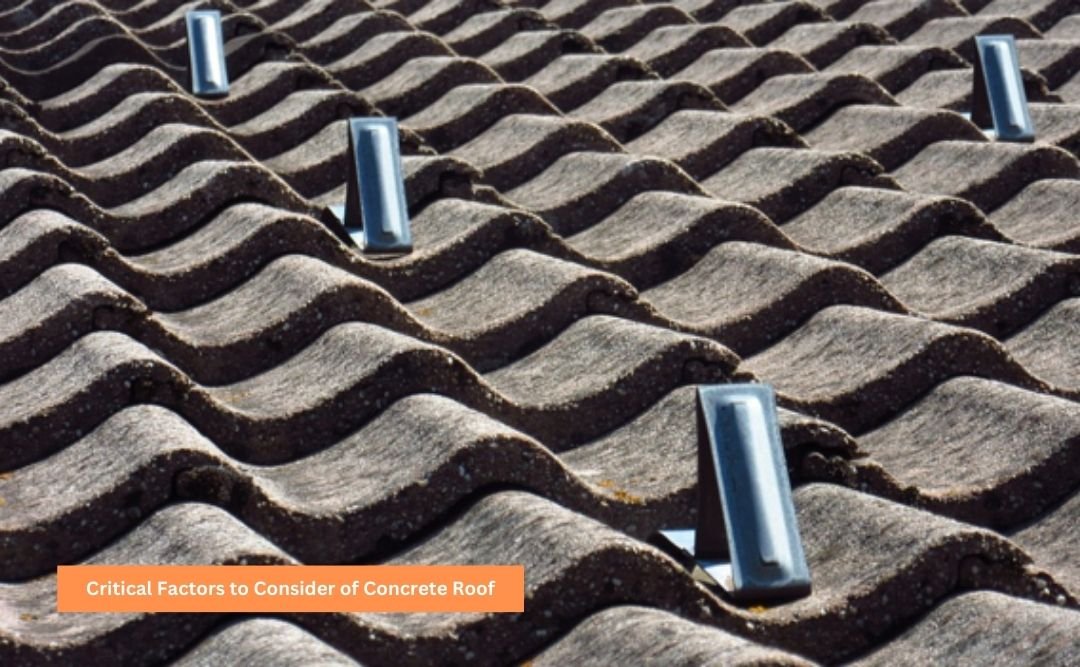
Price and Value: Price is an important consideration. It should not be the sole determining factor. Look for suppliers that offer a balance between competitive pricing and quality. Consider the general value, including product quality, warranty, and extra services.
Before making a final decision:
- Compare quotes
- Review product warranties
- Seek clarity on logistics
- Delivery timelines
Your goal is to ensure a smooth procurement process.
You can have peace of mind by taking the time to research and select reliable sources for your concrete roof tiles. You will have peace of mind when:
- You know that your roofing materials are of excellent quality
- Backed by reputable manufacturers or suppliers
- Will provide long-lasting protection for your home or building
Ensure you choose suitable concrete roof tiles. It is for your specific project requirements and climate conditions.
It is always recommended to consult with roofing professionals or architects.
We provide the mentioned suppliers and sources. We don’t endorse these examples.
Sources of Concrete Roof Tiles & Concrete Roofing Supplies & Standards
Some sources that offer information about:
- Concrete roof tiles
- Concrete roofing supplies
- Roofing standards
Ultimate Guide to Concrete Roof Tiles: Costs, Pros, and Maintenance” from Today’s Homeowner:
This article provides insights into the benefits of concrete roof tiles. It also covers their affordability and offers tips for making informed purchasing decisions.
These sources provide the information you need. They include concrete roof tile sources, concrete roofing supplies, and standards. Be sure to refer to the specific sources for more detailed information.
Concrete roofing standards play a crucial role in ensuring the quality, safety, and durability of concrete roof tiles. These standards outline specific requirements, specifications, and testing procedures. These concrete roof tiles must meet industry standards and building codes.
Here are some key aspects of concrete roofing standards:
1. ASTM International Standards
ASTM International, known as the American Society for Testing and Materials. It develops and publishes standards for various industries, including roofing. One of the crucial standards for concrete roof tiles is ASTM C1492 – Standard Specification for Concrete Roof Tile. This standard covers the physical properties, performance characteristics, and test methods. Addressed for concrete roof tiles. Ensures they meet the necessary strength, durability, and weather resistance requirements.
2. Design and Installation Guidelines
Concrete roofing standards also provide design and installation guidelines. Ensure proper installation and performance of concrete roof tiles. These guidelines cover aspects such as:
- Least slope requirements
- Fastening methods
- Flashing details
- Underlayment recommendations
- Ventilation requirements
These guidelines are crucial in ensuring the roof system functions as intended. It offers long-lasting protection.
3. Durability and Weather Resistance
Design concrete roof tiles to withstand various weather conditions. These include wind, rain, hail, and high temperatures. Concrete roofing standards set specific criteria for the performance of roof tiles. Measure it under different weather conditions and exposure levels. These standards often cover factors such as:
- Wind uplift resistance
- Water absorption
- Freeze-thaw resistance
- Color stability
Following these standards ensures the concrete roof tiles can withstand the weather conditions. These principles maintain their integrity over time.
4. Fire Resistance
Concrete roof tiles are best for their fire-resistant properties. Concrete roofing standards establish specific requirements. Its purpose is for fire resistance. It includes testing methods to measure resistance against ignition, flame spread, and heat release. Fire resistance compliance standards ensure fire building safety and help reduce fire spread.
5. Code Compliance
Design concrete roofing standards to align with local building codes and regulations. These standards ensure that concrete roof tiles meet or exceed the slightest requirements. Authorities set the structural integrity, wind resistance, fire resistance, and other crucial factors. Compliance with these standards is vital for getting building permits. They ensure the general safety and performance of the roof system.
It’s important to note that concrete roofing standards can vary from region to region. ASTM International standards, local, national, and international organizations develop their standards. They also adopt modified versions of existing standards. Their goal is to suit local conditions and specifications. It’s crucial to consult with local building authorities and roofing professionals. You aim to identify the specific standards and regulations applicable to your area.
Manufacturers ensure the quality and longevity of their products. They do it by adhering to concrete roofing standards. Manufacturers provide the quality and longevity of their products. Contractors and homeowners can have confidence in the performance and reliability of the roof system. These standards serve as benchmarks. They guide the industry towards a safe, durable, sustainable concrete roofing solution..